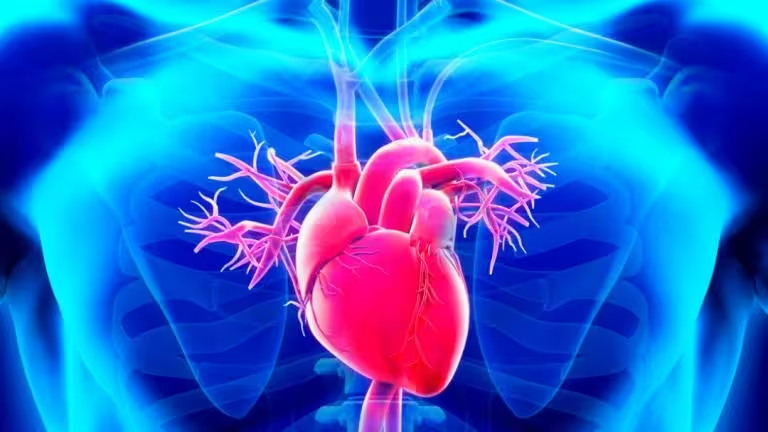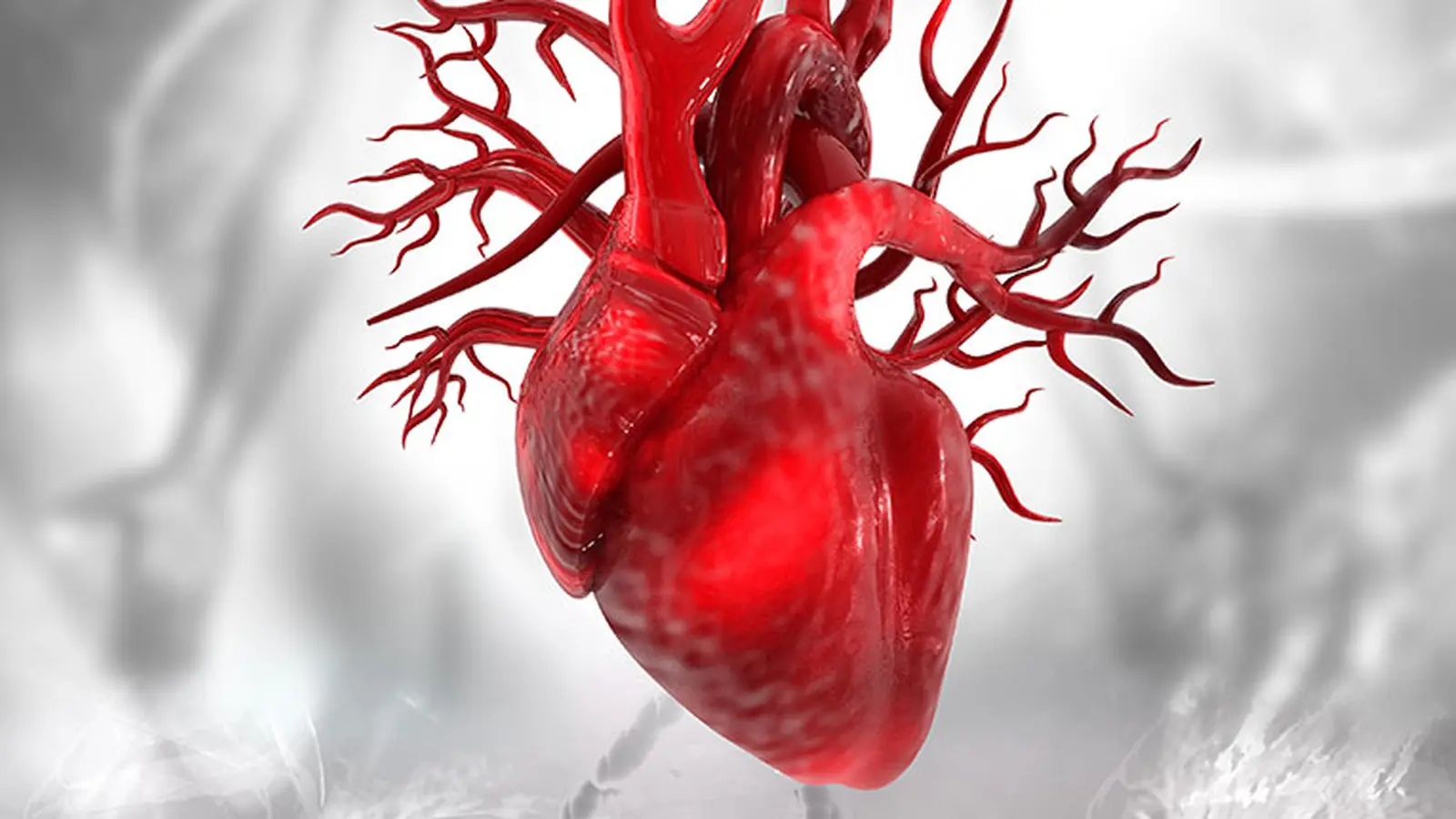9 Minutes
Emerging adulthood — roughly the ages between 18 and 25 — is often framed as a time of new freedoms: leaving home, starting work or college, forming relationships. But that period also hides an overlooked health reality: the foundations of adult heart disease are often laid years earlier, and a surprising turning point appears around age 17.
When heart risk quietly begins: the age‑17 inflection
We tend to think of heart disease as an older person’s problem, but multiple studies and electronic health record analyses point to a different timeline. Key measures of cardiovascular health — including diet, physical activity, sleep and clinical indicators such as blood pressure and blood sugar — begin to decline in late adolescence. In population data, a clear inflection often shows up at about 17 years of age. By the time many young people graduate high school, the first measurable risk factors for atherosclerotic cardiovascular disease are already emerging.
Atherosclerotic cardiovascular disease is the most common form of heart disease. Over decades, sticky, fatty plaque builds up inside arteries and narrows blood flow. That buildup doesn’t appear overnight; it is the cumulative product of behaviors and metabolic changes that begin much earlier than most people expect.
Key early drivers: nicotine, weight, and lifestyle shifts
Several modifiable risks accelerate the process during the transition to adulthood.

Nicotine exposure: cigarettes and vapes
Nicotine use among young adults has surged in recent years. Historical data show that nicotine product use increased from roughly one in five 18–23‑year‑olds in the early 2000s to substantially higher levels in the 2010s and 2020s, fueled by the popularity of e‑cigarettes and vaping devices. Nicotine harms the lining of blood vessels, promotes inflammation, and speeds plaque formation — all pathways that elevate long‑term cardiovascular risk. Importantly, increases in tobacco or vape use are linked with faster rises in early heart disease rates; one analysis found the rate among people under 40 more than doubled since 2010 and tripled among tobacco users.
Obesity and metabolic changes
Body mass index (BMI) trends for younger age groups have moved in an unfavorable direction. Currently about one in five people under 25 already has a BMI of 30 or higher, and projections indicate that by age 35 a majority could meet that threshold without intervention. Excess weight is tightly linked to elevated blood pressure, higher blood sugar, and abnormal lipid levels — all contributors to atherosclerosis. Since the 2000s, population averages for blood pressure, blood sugar, and BMI among young adults have worsened.
Diet, activity, and sleep
Beyond nicotine and weight, everyday habits change in emerging adulthood: more sedentary time, greater reliance on convenience or fast foods, irregular sleep, and often less consistent preventive care. Of these behaviors, diet is where U.S. children and young adults score worst. Yet even modest improvements — cooking more meals at home, increasing fruit and vegetable intake, or adding 20 minutes of moderate activity most days — can shift the long‑term trajectory.
How social and policy environments shape young hearts
Individual choices matter, but upstream factors strongly influence those choices. Access to health care, neighborhood design, education, and economic stability all shape the likelihood of healthy behaviors and timely screening.
Access to preventive care
Policy changes such as the Affordable Care Act, which lets young adults remain on parental insurance plans until age 26, have improved access to preventive services like blood pressure checks, cholesterol screening and counseling. Still, many young people do not receive routine preventive visits. Telehealth and community clinics can lower barriers, but awareness and utilization remain inconsistent. A simple screening and conversation during a well‑visit can identify early warning signs that otherwise go unnoticed for years.
Neighborhoods, education, and social ties
Where someone lives affects heart health. Neighborhoods with parks, safe sidewalks and affordable healthy food make healthier choices more achievable. Education and employment stability correlate with better health literacy, lower chronic stress and greater access to care. Social connections also play a role: supportive relationships reduce stress and are associated with better cardiovascular outcomes. Conversely, loneliness and overreliance on social media — common among teens and young adults — do not provide the same protective benefits as in‑person social support.
Practical science: the Essential 8 and early screening
The American Heart Association’s “Essential 8” highlights eight modifiable risk factors that can meaningfully reduce lifetime cardiovascular risk. Four are behavioral and four are clinical.
Behavioral targets
- Avoid nicotine in all forms: cigarettes, vape products and other nicotine devices.
- Get regular physical activity: about 150 minutes of moderate to vigorous activity weekly (roughly 20 minutes a day).
- Prioritize sleep: aim for seven to nine hours nightly for most young adults.
- Eat a heart‑healthy diet: increase vegetables, berries, whole grains, fish and healthy fats while reducing processed foods and sugary beverages.
These behaviors are interlinked. For example, better sleep supports appetite regulation and activity, while cooking skills promote healthier eating patterns that persist into middle age.
Clinical measures to track
- Blood pressure.
- Fasting blood sugar or HbA1c.
- Cholesterol (lipid profile).
- Body mass index and waist circumference.
Since three of these four clinical measures have trended worse among young adults in recent decades, early monitoring is crucial. Many abnormalities are silent — you can feel well while numbers move in the wrong direction. Routine checkups provide opportunities to detect problems early and to start interventions that can change future outcomes.
Scientific background: what the evidence shows
Longitudinal cohort studies and analyses of large electronic health record databases have helped researchers connect adolescent behaviors with midlife cardiovascular outcomes. Studies show that modifiable risk factors carry forward: persistent smoking, sustained obesity, and long‑term inactivity all compound risk. Imaging and biomarker research also confirms that vascular changes begin earlier than clinical events, with subclinical plaque and arterial stiffness detectable decades before a heart attack or stroke.
Public health researchers therefore emphasize a life‑course approach: prevention starting in childhood and adolescence yields greater returns than waiting until middle age. Intervening at the age‑17 inflection offers a strategic window — young people are developing independence, making daily choices, and often still have connections to family and health systems that can support healthier habits.
Expert Insight
“We used to treat cardiovascular disease as a problem that only showed up later in life,” says Dr. Maria Thompson, a cardiologist and population health researcher. “But the evidence is clear: the habits and exposures of late adolescence set the stage for decades. Small, sustained changes during the transition to adulthood — quitting nicotine, learning to cook, regular movement and routine screenings — translate into large benefits over a lifetime.”
Dr. Thompson emphasizes practical steps: “Make heart health a topic at annual checkups. Ask your clinician for basic metrics — blood pressure, BMI, and a lipid screen if indicated. And think of prevention as part of becoming an independent adult. It’s an investment in the life you want to lead.”
How to act now: tangible steps for young people and caregivers
Whether you are a teen approaching 17 or a parent of one, there are concrete things to do:
- Schedule an annual preventive visit and ask for a heart health check — blood pressure, weight, and a discussion about nicotine use and sleep.
- If you use nicotine, seek cessation support now — quitting earlier produces better long‑term vascular outcomes.
- Build small routines: 20 minutes of daily brisk walking, one home‑cooked meal a few times per week, and consistent bedtimes add up.
- Learn to cook basic meals. Cooking skills in young adulthood predict healthier diets later in life.
- Support structural solutions: advocate for parks, safe sidewalks, affordable healthy food options and access to youth‑friendly preventive health services.
Primary care providers can also change the conversation. When clinicians initiate heart health discussions with younger patients, they create opportunities for early detection and behavior change. Patients who feel comfortable raising questions tend to receive tailored advice, referrals and follow‑up plans.
The turning point at about 17 years old is not a verdict — it’s a signal. Recognizing that heart health trajectories often shift in late adolescence gives young people, families and health systems a decisive moment to act. The habits formed during this period are not trivial; they are investments in decades of healthier life.
Source: sciencealert
Comments
atomwave
Useful but kinda preachy. BMI hitting 30 by 35 feels alarmist, socioeconomic drivers glossed over. Small changes help, sure tho.
Tomas
Is this even true? 17 seems kinda random, could be cohort effects, socioeconomic confounders, where's the causality tho not convinced.
labcore
wow didnt expect 17 to be a turning point. Makes me rethink teen habits... cooking classes, sleep, stops vaping now? legit scary, tbh


Leave a Comment